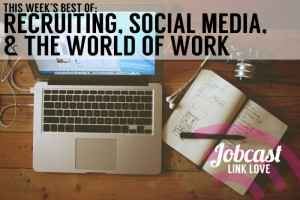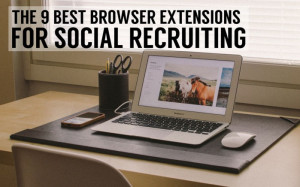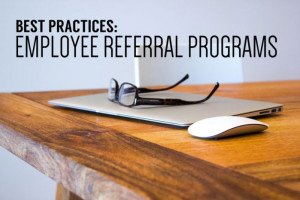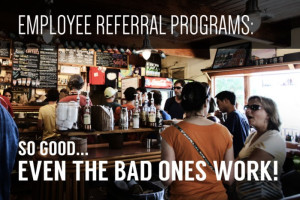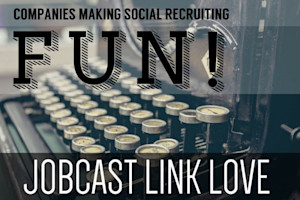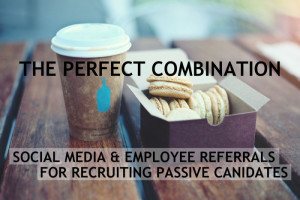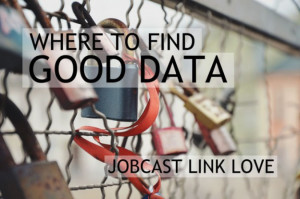I love browser extensions because they are like shortcut keys that you do not have to memorize, and because without them my workload would double… And I would have to reset my company email account password every Monday!
HR has a lot on their plate, especially now that hiring has gone social. From writing the perfect Job ad, to creating highly engaging visual images, to choosing effective hashtags for hiring top talent (we recommend #hiring), successful social recruiting is hard work.
Thankfully, there are awesome browser extensions that can help you manage all of these tasks and more.
Here are our favorite extensions for social recruiting, plus three more that we think no internet using human should live without!
Bit.ly
The Bitly browser extension is a link-shortening tool.
With Bitly you get custom shortening, analytics, and a copy-and-share button, along with some other nifty, but un-necessary extras, like notifications.
Bitly is easy to use, and keeps your posts looking professional and tidy.
Dragdis
Dragdis is a browser extension that lets you quickly save text, photos, videos, and links by dragging and dropping.
I use Dragdis to save any visual content that I want to share later, keep on file for reference, or use in a future blog post.
Pocket
Pocket is a saving tool like Dragdis, but for blog posts and articles.
The Pocket extension allows you to quickly save articles to read later, and even tag them so that you can organize your Pocket library’s content by category.
Feedly Mini
To be effective with social recruiting you need to build up a social media content strategy.
This means sharing more than just job ads.
To source great content to share with your social networks, you need a reader tool. My favorite, and one of our 5 Essential Apps for Social Media Management is Feedly.
The Feedly Mini extension adds a small icon to the bottom of web pages that you can use to add the feed directly to your Feedly reader, share to your social networks, favorite, or save to Evernote.
Sidekick
Sidekick is a browser and email extension that lets you see who’s opening your emails and when, and allows you to schedule emails to send later.
Why is Sidekick awesome for recruiters? It lets you know when a potential hire has opened your email, so that you can make sure to follow up with a friendly, and perfectly timed phone call.
Rapportive
The Rapportive extension is like caller ID for your email!
With Rapportive, once you receive, or write an email, the social profile of the person you are connecting with instantly pops up on the right-hand side of your screen.
This tool is great for keeping track of details about who you are writing to, so that you do not get them mixed up with someone else, and make a horrible social blunder.
Not that this happens to me… Anymore… Thank you Rapportive!
Streak for Gmail
The Streak extension is a tool for combining your CRM and your email inbox, but, it’s easy to make Streak more specific to hiring and recruitment. Switching out the sales jargon for more recruitment specific language. Leads = potential candidates, sales = hires etc… makes Streak an awesome tool for HR.
Streak provides all of the tools you need to track the hiring process from within your email account. You can: check and send emails, group emails from a candidate or for a specific job opening together, keep track of status, notes and details of each potential hire, share information within your team and see every email between a candidate and your team all from the one app.
WhoWorks.At
The WhoWorks.At browser extension will let you know if you have any connections who work at whatever site you’re currently browsing, and if so, who they are.
The extension lists your connections, along with links to their LinkedIn profiles and basic info about them.
HootSuite
Hootsuite is the most popular social media management tool out there.
The Hoosuite browser extension allows you to schedule and share posts to multiple social networks (Twitter, Facebook, LinkedIn, Google+, Foursquare, MySpace, WordPress, TrendSpottr and Mixi.)
For the love of all things good in the world (wide web) get these extensions!
LastPass
Did you know that using the same password for all of your different online accounts is a REALY bad idea? Especially if that password is just your cat’s name followed by 123.
But, if you’re like me, it’s completely impossible to remember a different, “secure” password for all of your accounts.
That’s why you need LastPass.
Not only does LastPass remember all of your passwords, it also helps you generate super secure, unique passwords for all of your accounts. Say good-bye to the “forgot password” screen of shame and hello to the awesomeness that is only having to remember one password.
LastPass, I love you!
(video not available)
TabCloud
The TabCloud extension allows you to save a load of tabs to a cloud syncing service so you can open them at another time or on another computer with one click. It is easy to use, efficient and free.
I also use TabCloud to save groupings of tabs that I like to use in combination.
For example, I have a “social media tabcloud“ that opens Hootsuite, Feedly, Pocket, and Dragdis all at once for easy content searching and sharing.
AdblockPlus
Adblock Plus, like the name implies, blocks annoying pop-ups.
With the Adblock Plus extension You will never have to worry about a horribly inappropriate message popping up from Kiki the fun loving blond while you are -surfing the internet- looking up HR advice online at the office.
These are our current favorites, but we’re always looking for more, so we’d love to know…
What are your favorite browser extensions?
